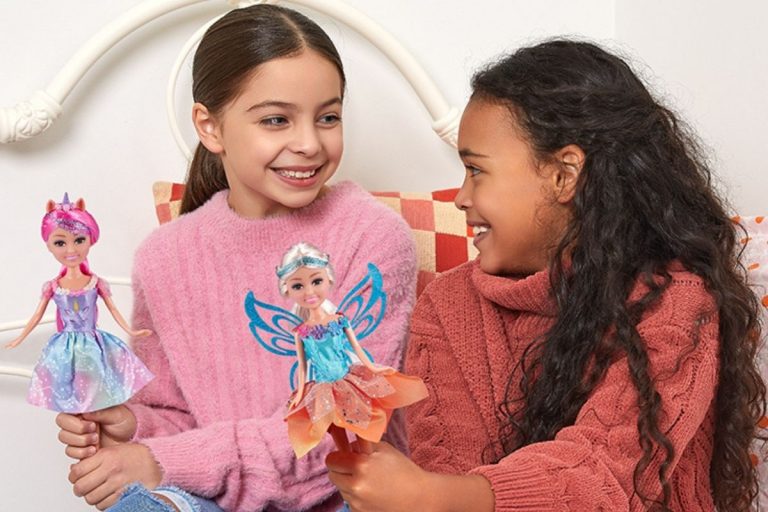It is hard finding the right toy for your baby, especially when there are so many on toys offer, online and in NZ shops galore. This guide will help you choose the right toy for your baby, so your child can make the most of play time.
Things to Consider
When buying toys for your baby, there are two important things to consider. The first is safety, and the second is that the toy is appropriate for your child’s stage of development. Toys are important building blocks for your child, so it is important that they stimulate your child’s learning while still keeping challenges achievable. Your considerations for this age group should be:
Safety
As with younger babies, small toys or toys with small parts should be kept well away from children at this age. Infants put everything in their mouth, so small parts are serious choking hazards. Toys should be made from non-toxic materials, and be free from sharp edges which may cut or bruise the gums.
As baby starts to become more mobile, long strings and ribbons become more of a hazard. Babies can easily wrap themselves up in cords, and strangulation can happen in minutes. Mobiles should be moved well out of reach, as older infants start to explore anything within grabbing distance.
Development
At this age babies start to become incredibly curious, and begin to explore anything and everything around them. They are beginning to develop fine motors skills, and will start to pick up and mange items with just their fingers. Levers, knobs, buttons and switches will provide them with hours of fun.
Over these months, babies will also start to solve simple problems to do with space, size and balance. They will discover that even if they can’t see an item, it still exists, and will become fascinated by pop-up or peek a boo type games. You will start to find objects in the funniest of places, as your child begins to post things all over the house.
Sitting unaided is mastered during these 6 months, and your child will also begin crawling – sometimes at incredible speed! As your child nears to 12 months, they will begin cruising around the furniture, or use large objects to stand and steady themselves.
Your baby will recognise their own name and start to mimic simple words and actions. They will start giving you the best belly laughs in the world, as they begin find simple surprises delightful.
Best Baby Toys 7 – 12 months
There are literally hundreds of baby toys available, and they vary dramatically in price and quality. In terms of baby toys you really do get what you pay for, so try to stay with reputable brands, and buy a few good quality toys rather than a box full of junk. Here are our Top 10 Toys for Babies 7, 8, 9, 10, 11 & 12 months old. Our article Baby Toys for 0-6 Months gives you some great ideas for baby toys also.
Music Compact Discs
Music helps your child to develop in so many ways – intellectually, emotionally and socially. Whether you are using it to develop a routine around bedtime, or just as a way to have fun with your baby, music is soothing, calming, relaxing and energizing all rolled into one.
This age is a great time to introduce very simple action songs. Your baby won’t master every action straight away, but they will begin to make connections and start mimicking your movements. Mimicing you is one of baby’s favourite games at this age.
Musical Instruments
Babies love getting rewarded for their actions, and musical instruments respond so well. A simple swing of the arm will reward your baby with sound, so it’s instant gratification for them. Great musical instruments for this age group include:
- Bells
- Bongo Drums
- Finger Symbols
- Maracas
- Xylophone
- Tambourine
Make sure the instruments are light weight, and have no sharp edges.
Bath Toys
As baby learns to sit up and stay steady, bath time becomes a whole lot more fun. Bath toys with holes and sieves provide plenty of stimulation, as do squirting toys and water wheels. Any containers that can scoop, pour or collect water will do the trick.
Pop-Up Puzzles
At this age your baby is beginning to realise that just because they can’t see an item, doesn’t mean it no longer exists. If you hide a toy, they will start to search for it, and if you disappear, they will start to search for you too!
There are some great pop-up toys on the market which allow children to press, push, turn and twist levers to ‘pop-up’ hidden toys. Not only do these toys help develop your child’s fine motor skills, the ‘appearing’ and ‘disappearing’ will keep them fascinated for ages.
Shape Sorters
Problem solving is a huge area for development at this age, and your child’s curiosity is enormous. Shape sorters or posting boxes provide endless hours of fun as they try, try and try again. Your child will explore all sorts of problem solving methods and will be quite proud of themselves when a shape finally falls through – even if it is just by chance.
Hammer and Peg Set
Once your child is sitting they will love to bang, and a wooden hammer board will reward their efforts with something other than sound. At first your child will bang the pegs through the board by sheer fluke, but eventually they will learn that it is their movements which are causing the pegs to move.
Stacking Cups
Blocks and building toys help your child to develop all sorts of skills, and stacking cups are the ideal building toy to get them started. Not only can your child build up, but stacking cups can nest inside each other, be used to play hide and seek with smaller toys, be rolled around as your child starts to crawl, and taken to the bath for scooping and pouring. Stacking cups really are a versatile toy, and one of the most reasonably priced.
Moving Toys
As your child starts to crawl, they will enjoy toys that they can push around with them. Look for cars and trucks with big sturdy wheels, or rolling toys that bob and swirl as they move. Push and go type toys are great for encouraging your child to chase across the room.
Walking Trolleys
Cruising around the furniture is just a step away from walking (excuse the pun!), and a walking trolley will help close that gap. A walking trolley is just that – a trolley which your child can walk around with. It provides something for your child to lean on when they are first starting to walk, but it gives them the freedom to walk away from the furniture.
A good walking trolley is light enough for your child to push, but heavy enough to provide some resistance. Make sure the wheels move slowly, so that the trolley doesn’t take off on them unexpectedly.
Infant Obstacle Course
Once your child is crawling and climbing, you may want to provide some activities to challenge those physical developments safely. Crawling tunnels, foam cubes and wedges, soft steps and gym mats are all great pieces of equipment which your child will continue to use for many years. This type of equipment is not cheap, but their versatility means they have a good lifespan if well looked after.
Remember, you and your voice will be your baby’s favourite toy for some time yet. So forget the washing pile, and spend some time laughing, dancing, singing and playing. Have fun!





